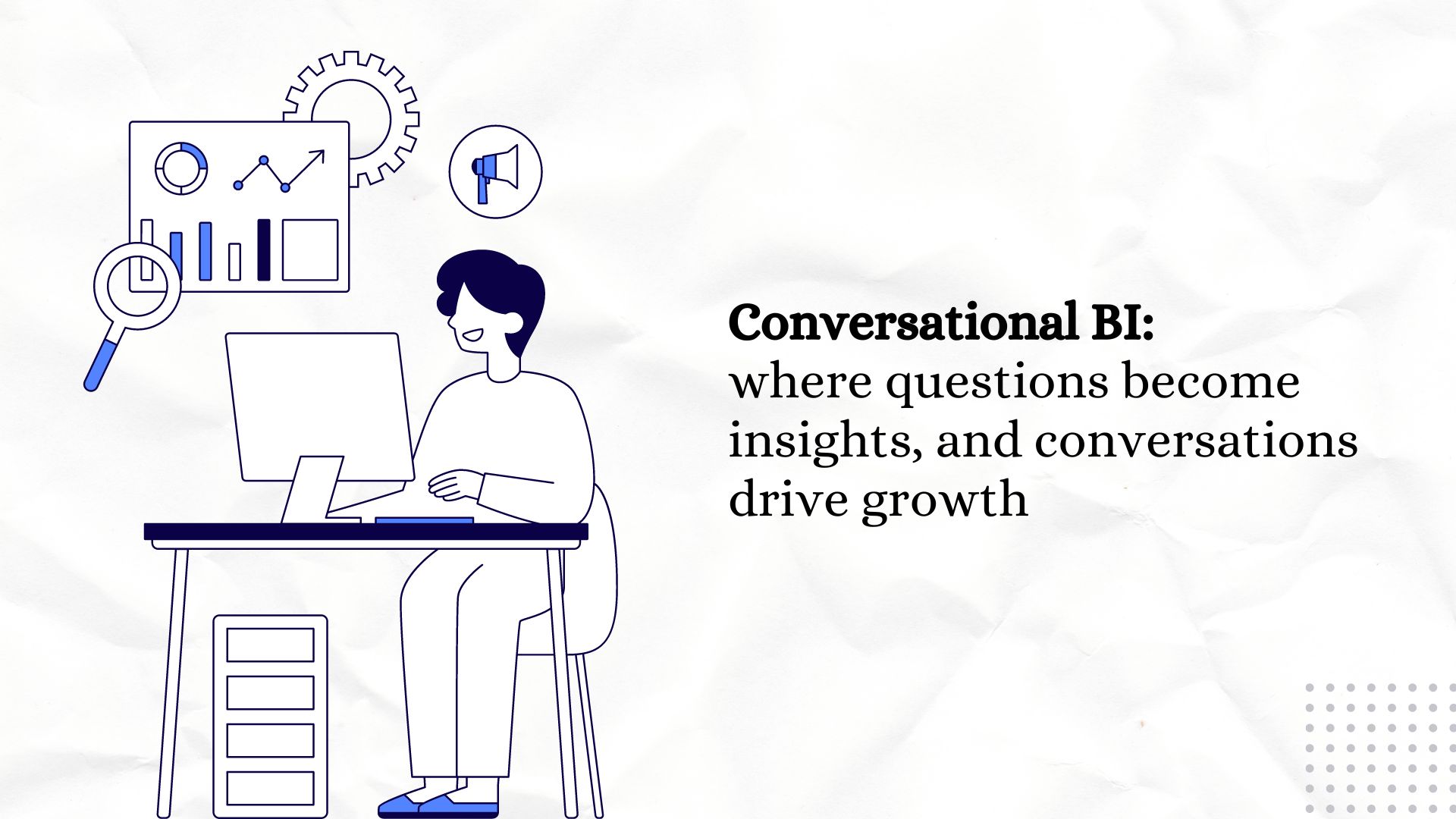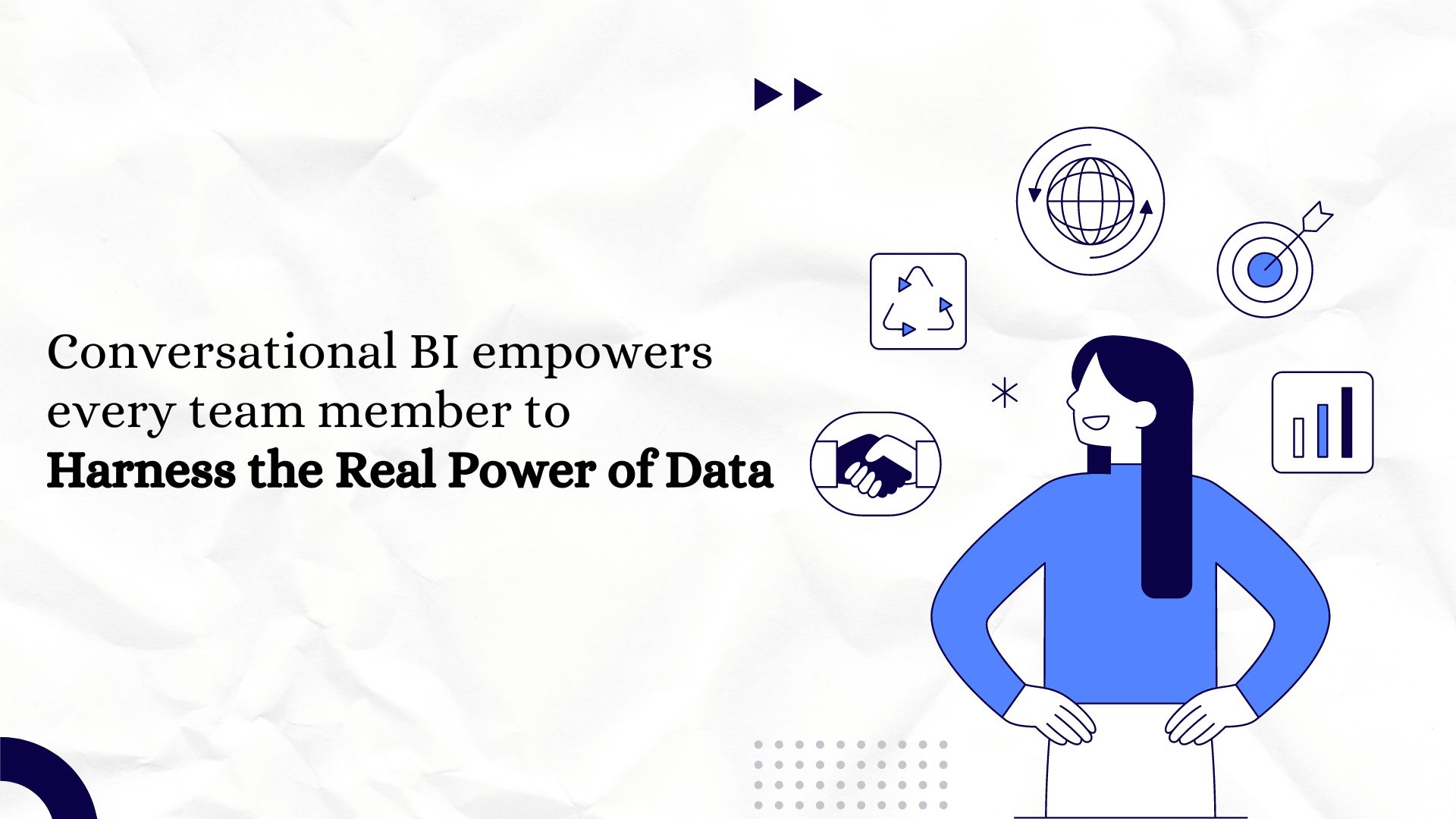- Home
- Generative BI
- Conversational BI: Talk to You ...
Table of Contents
Introduction

The ability to interact with your Data in a natural, conversational manner is becoming increasingly vital. Imagine a world where you can simply ask your database a question, and it responds with the necessary information, generating visualizations and insights on the fly.
This is the promise of Conversational BI, where human language interfaces seamlessly with database querying and visualization tools, empowering users to extract insights without needing to know complex coding languages or data visualization techniques.
In this blog post, we’ll delve into the concept of Conversational BI, exploring its potential benefits, challenges, and practical applications. We’ll also discuss how advancements in natural language processing (NLP) and machine learning are making this vision a reality.
Unleashing the Power of Conversational BI: Talking to Your Databases
In the fast-paced world of business, decisions need to be made quickly and accurately. Data plays a crucial role in this decision-making process, providing insights that can inform strategic moves and drive business growth. However, accessing and analyzing this data can often be a cumbersome and time-consuming task, requiring specialized knowledge of database querying languages and visualization tools.
Enter Conversational BI. This innovative approach to data analysis leverages the power of natural language processing (NLP) and machine learning to enable users to interact with their data using everyday language. Instead of writing complex SQL queries or navigating through intricate dashboards, users can simply ask questions and receive instant insights, presented in the form of charts, graphs, and summaries.
So, How does Conversational BI work?
At its core, it involves two key components: natural language understanding (NLU) and automated data processing. NLU algorithms parse user queries, extracting the intent and key entities, such as metrics, dimensions, and filters. These queries are then translated into database queries or API calls, fetching the relevant data from the underlying data sources.

Once the data is retrieved, automated data processing algorithms analyze it to generate visualizations and insights. These algorithms can determine the most appropriate chart type based on the nature of the data and the user’s query. For example, if the user asks for a comparison of sales figures across different regions, the system might automatically generate a bar chart or a line graph, depending on the temporal aspect of the data.
One of the key benefits of Conversational BI is its accessibility. Traditional BI tools often require extensive training to use effectively, limiting access to data-driven insights to a select group of individuals within an organization. With Conversational BI, anyone can access and analyze data, regardless of their technical expertise. This democratization of data empowers employees at all levels to make informed decisions based on real-time insights.
Moreover, Conversational BI promotes a more intuitive and natural way of interacting with data. Instead of being constrained by the syntax of a query language or the limitations of a predefined dashboard, users can express their queries in their own words, making the process of data analysis feel more like a conversation than a chore.
However, implementing Conversational BI is not a challenge anymore, as it ensures the accuracy and reliability of natural language understanding algorithms. NLU systems are pre-trained on vast amounts of data to accurately interpret user queries and extract the intended meaning.
Integrating Conversational BI systems with existing data infrastructure has become easy now. Many organizations have complex data ecosystems, comprising multiple databases, data warehouses, and APIs. It Ensures seamless connectivity and real-time data access across these disparate systems with robust security.
By enabling users to interact with their data in a natural, conversational manner, organizations can unlock new insights, drive innovation, and gain a competitive edge in today’s data-driven world.
Conclusion
Conversational BI represents a paradigm shift in the way we access and analyze data. By combining the power of natural language processing with automated data processing, it promises to make data analysis more accessible, intuitive, and efficient than ever before. As organizations continue to embrace data-driven decision-making, Conversational BI is poised to play a central role in shaping the future of business intelligence.

Apoorva is a passionate and driven individual who accidentally found her interest in Business Intelligence and Data Analysis while studying Travel and Tourism. Despite her first love for being Content Writer and Blogger, she now creates compelling content on NLP-driven decision-making and a No-Code Data Platform that influences businesses. Her commitment to making Data accessible and Democratized for everyone has led her to work with NewFangled Vision on NLP-based Conversational Driven Data Analysis.
Category
- Case Study
- CRM GenAI
- Customer Sentiment Quester
- Data Analytics
- Data Democratization
- Decision Enabler Platform
- Enterprise GenAI
- Excel Sheet Analytics
- GenAI for manufacturing
- Generative AI
- Generative BI
- Log Analytics
- Media Analytics
- Newfangled Vision
- No-Code BI
- No-Code ETL
- PolusAI
- POS GenAI
- Real Estate Anlaytics
- Research
- Self-Service Analytics
- Stream Analytics
- Uncategorized
- VADY

